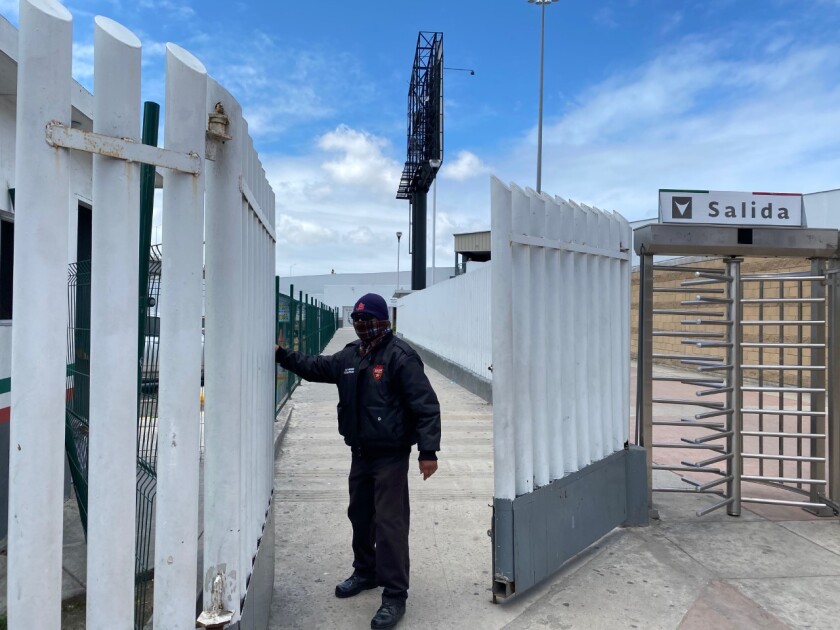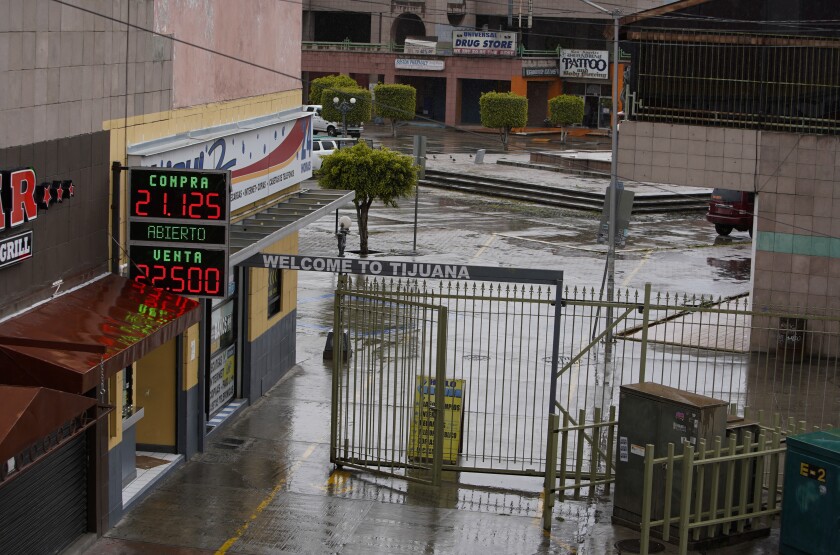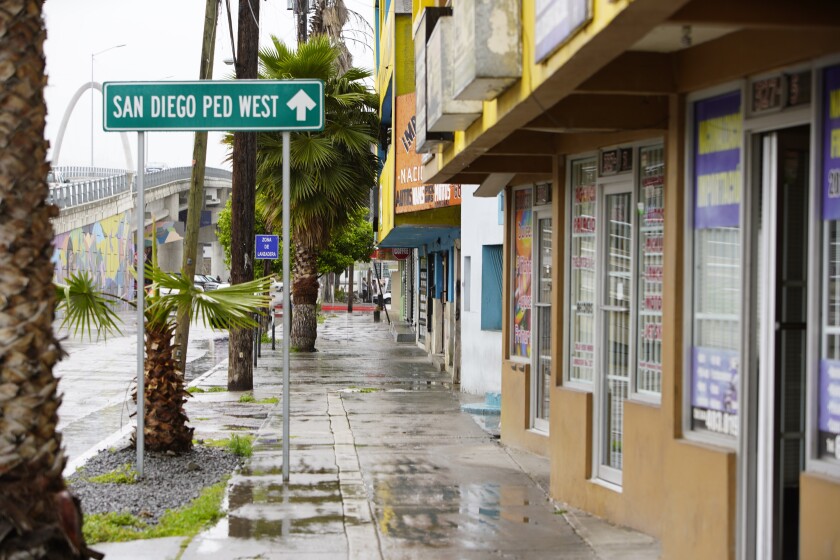The U.S.-Mexico border has seen an unprecedented 70 percent drop in crossings in the region

Tijuana’s border has become a ghost town.
Gone from the city’s typically bustling border region are the students off to class, the grumbles from taxi drivers competing for customers, and the scent of freshly cooked tortillas.
Closed because of coronavirus restrictions, the now-empty square in front of the El Chaparral border crossing looks abandoned — its vacancy exposing graffitied, trash-strewn streets and crumbling sidewalks.
“It looks like something out of a scary movie,” said Carlitos Vargas, who has worked for 20 years in a pharmacy at Plaza Viva Tijuana, directly across from El Chaparral.
The U.S.-Mexico border footbridge that connects Tijuana’s northern tourist zone with San Ysidro’s Las American Premium Outlets was shuttered Sunday after an unprecedented 70 percent drop in border-crossings in the region.
/arc-anglerfish-arc2-prod-infobae.s3.amazonaws.com/public/XLDF3T3QTRACBMDYV63JV5PYVU.jpg)
New coronavirus measures in both countries have severely restricted cross-border travel, allowing only people who work in essential jobs or those with valid medical reasons.
Commerce and cargo traffic has not been restricted, but it has seen at least a 20 percent, possibly up to 50 percent, drop-off, according to Alejandra Mier y Teran, president of the Otay Mesa Chamber of Commerce.

Tijuana Mayor Arturo González said city officials initially had to enact some tough measures, like 6 a.m. patrols involving the Army, to clear the city’s beach and tourist areas such as Playas de Tijuana.
Last month, crowds at beaches and bars in Tijuana initially increased when San Diego implemented stricter regulations that closed down its recreational areas and venues. But González said the new border regulations and enforcement have taken care of that.
“I want to report that, for example, in Playas de Tijuana this Sunday, it was a day with almost zero visitors, it was very calm and without problems. This is very important to combat the coronavirus … I know it’s difficult. I know it’s hard, but it’s for the health of all of our loved ones,” said González.
Tijuana had the highest jump in cases on any single day with 51 new cases, up from 95 on Tuesday to 146 on Wednesday. There were 240 confirmed cases in Baja California as of Wednesday, with a total of 13 people dying from the disease across the state. However, health experts consider that number to be only a fraction of the total actual cases because of severely limited testing across the state.

Esther Morales, a small business owner, makes tamales at the La Antigüita Tamaleria on Calle 4TA near the border.
She said she is barely able to remain open during the economic downturn brought on by the partial border shutdown.
“Most of my business comes from people who are taking my tamales to go to the United States, so if people aren’t coming from the United States or going to the United States, business is very bad,” she said.
Morales said she remains open, but the most she’s sold in tamales since the new border restrictions went into place is about 500 pesos or about $20 in one day.
“Right now, I’m getting ready to take some tamales to donate to the shelters because things are much worse there,” said Morales. “Tomorrow, I will go to the market and make some fresh tamales and if I can’t sell them, I’ll take them again to the shelters, so they have some food.”

Miguel Marshall, an entrepreneur and small business owner in Tijuana, said he’s had to temporarily close in-house service at his very popular Cereus Bar near the border because of coronavirus restrictions, as well as Elvira, his new restaurant and bar in Sexta, a tourist area.
Marshall said his Nativo coffee shop, adjacent to Cereus Bar, is serving only take-out or delivery, adding he’s had to temporarily cut 80 percent of his staff.
Tijuana coronavirus regulations allow people to purchase alcoholic beverages for take-out or delivery from some establishments. Cereus has launched a “Drink at Home” marketing campaign to offer such options.
Marshall said he thinks the city and small businesses will be able to bounce back quickly by about August or September.
“I would say that people are resilient and supportive of local businesses,” Marshall said. “They know the struggle and understand that a local economy’s foundation is through small businesses. Tijuana has always been known because of its reinvention process, and today we are once again reinventing ourselves for a new era of business where health and awareness will become the main item on the agenda.”
Business at grocery stores remains steady through the city, along with food supplier factories in the city’s eastern border area.
The majority of the city’s 593 maquiladoras, including those that produce electronic devices and automobile parts, continue operating, even though the Baja California Secretary of the Economy has said all that do not produce medical devices should shut down. Businesses are waiting for clearer guidelines from the federal government on which factories are considered essential.
At Plaza Viva Tijuana — already struggling economically before the coronavirus crisis began — Vargas, the pharmacy worker, isn’t quite so optimistic.

The downturn from coronavirus has only made matters worse, he said.
Many border restaurants had to close down even though they’re technically allowed to remain open under coronavirus regulations. Vargas said a lack of foot traffic from border crossings has already closed about a quarter of the restaurants by the border.
“I think people are really, really scared. Who knows how we’re going to get out of this or what will be open by the time it’s done?” said Vargas.
Source: sandiegouniontribune.com
The Mazatlan Post





